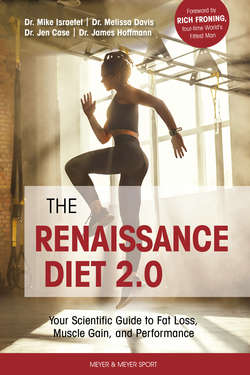Читать книгу The Renaissance Diet 2.0 - Mike Israetel, James Hoffmann - Страница 97
На сайте Литреса книга снята с продажи.
Glycemic Index Values and Real-World Eating
ОглавлениеPopular opinion would have you believe that highly glycemic foods cause excessive insulin secretion thereby making you fatter. While there is a seed of truth to this claim, it is not consistently true, and unwanted fat gain is not always the result. Some foods with low glycemic index values cause high amounts of insulin to be secreted. A perfect example is skim milk and lean yogurt products; despite inducing significant insulin secretion, heavy consumption of these products is inversely associated with obesity. This means that people who eat lean dairy products are less likely to be obese. Carrots are another example; they have a relatively high glycemic index value, but their consumption is not generally associated with obesity. While high glycemic foods can make people want to eat more, cravings are actually more dependent on how satiating a food is, irrespective of glycemic index values. White potatoes are very glycemic but are extremely filling and so do not tend to increase cravings. Glycemic indices are not of themselves a measure of how healthy a given food item is or is not. Carb sources are generally consumed within a meal containing other foods; estimating glycemic index values for mixed meals is very difficult, and the value for any given mixed meal will be lower than any of its ingredients alone. Author Mike Israetel’s middle school physical education teacher, with the best of intentions, instructed students not to eat candy bars before sports games because the sugar would “burn up quickly and have them crashing” midway through the event. In reality, Snickers bars or any other chocolate-based candy bar have glycemic indices of around 50, similar to whole grains. The fructose in high fructose corn syrup is extremely slow digesting, and the high fat content of such candy decreases its glycemic index even more. When protein, fat, and fiber are involved in real meals people actually eat, the glycemic index value becomes just a very small factor in a bigger equation in which macro amounts, calories, and actual digestion times play a more dominant role. That being said, high glycemic carbs, eaten alone without other foods to slow their digestion, serve a valuable purpose in intra- and post-training meals, improving health and fitness outcomes in that context.
